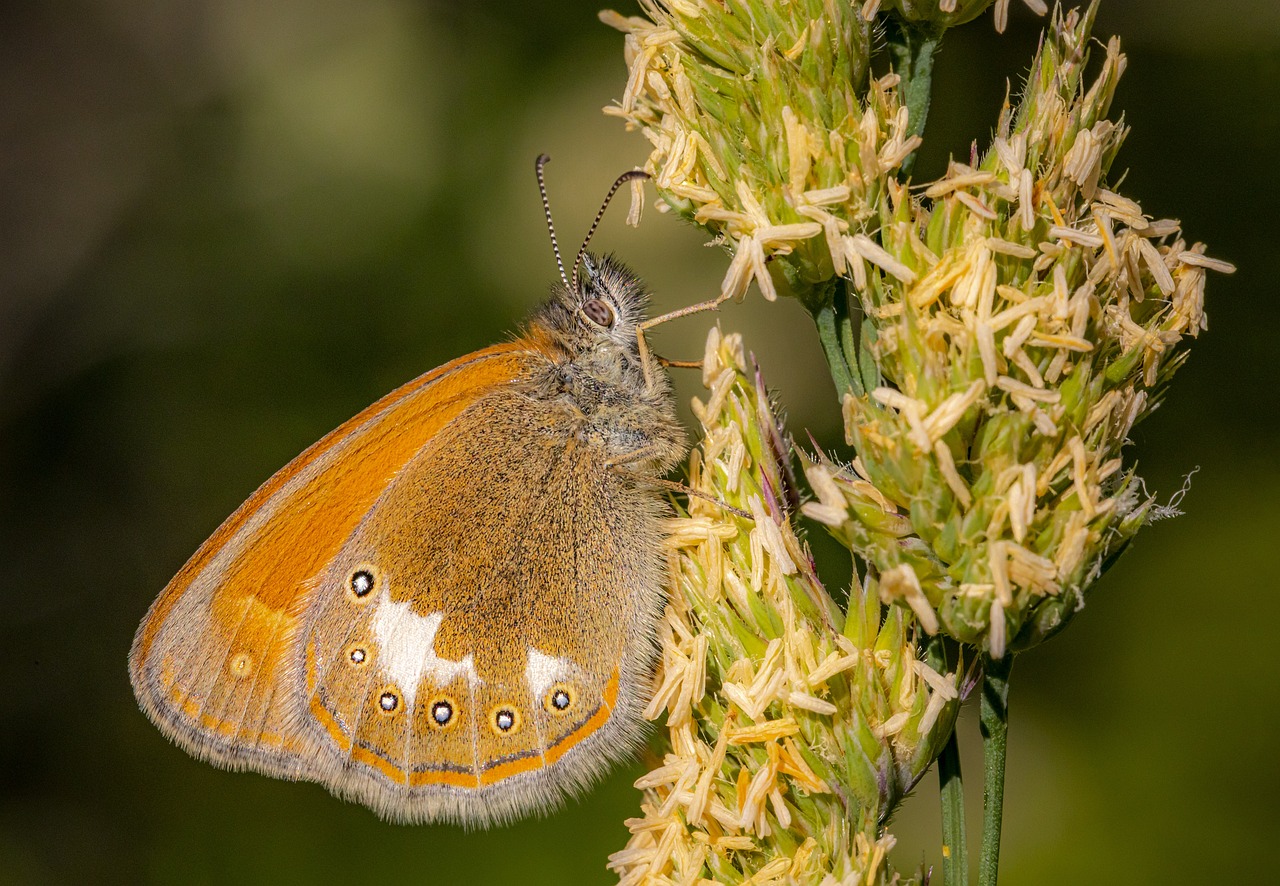The Chestnut Heath (Coenonympha glycerion) is a small butterfly belonging to the Nymphalidae family, specifically the subfamily Satyrinae. It is found primarily in Europe and parts of Asia and is named for the distinctive chestnut color on the undersides of its wings.
Key Characteristics:
- Appearance:
- Wingspan: Around 28-34 mm (1.1-1.3 inches).
- Color:
- Upperside: Dark brown with little to no markings, giving it a somewhat muted appearance.
- Underside: The hindwings have a chestnut-brown color with small, delicate white or light-colored eye spots that add contrast. The forewings have a paler brown color.
- Shape: Rounded wing edges, characteristic of many species within the Coenonympha genus.
- Behavior:
- Flight: The Chestnut Heath exhibits a weak, fluttering flight. It typically stays low to the ground, flying around grassy meadows and forest edges.
- Feeding: The butterfly feeds primarily on nectar from flowers such as knapweed and scabious. It often perches on flower heads, sipping nectar for long periods.
- Habits: Males are known to patrol for females, and their movement is often limited to small territories.
- Habitat:
- Prefers warm, grassy areas, including meadows, clearings, and forest edges. It can also be found in calcareous (limestone-rich) grasslands, often at lower altitudes, but it may also occur in mountainous regions.
- Life Cycle:
- Eggs: Laid singly on grasses or low-growing plants.
- Larvae: The caterpillars feed on grasses, particularly those of the Poaceae family. They are green with light stripes, blending in well with their grassy surroundings.
- Pupae: The chrysalis is greenish and often attached to a grass stem.
- Adults: Emerge in a single brood during the summer months, typically from June to August, depending on the region.
- Range:
- The Chestnut Heath is found across central and eastern Europe, extending into parts of Asia. It is common in countries like Germany, Austria, and the Balkans. However, its range is more limited in western Europe, where it is less frequently seen.
- Conservation Status:
- Though not globally threatened, the Chestnut Heath’s populations can be vulnerable in some areas due to habitat loss, particularly from agricultural intensification and land development. In regions where meadows and grasslands are well-preserved, the species can still be abundant.
Conclusion:
The Chestnut Heath is a modest yet charming butterfly that thrives in grassy and sunny habitats. Its preference for undisturbed meadows makes it a valuable indicator species for healthy ecosystems. Its subtle, chestnut-hued wings and gentle flight pattern make it a serene presence in the landscapes where it resides.
Visited 819 times, 1 visit(s) today
Views: 1269
Subscribe to the newsletter:
